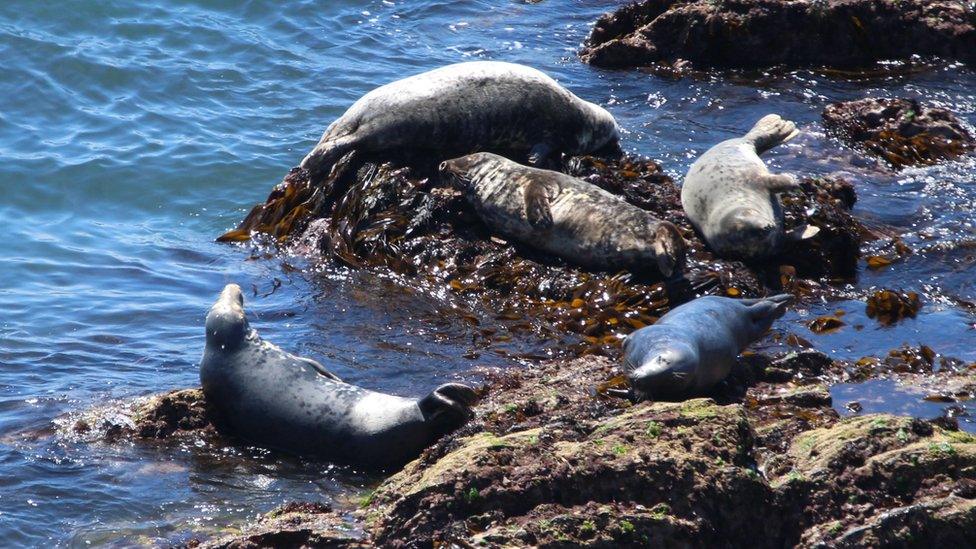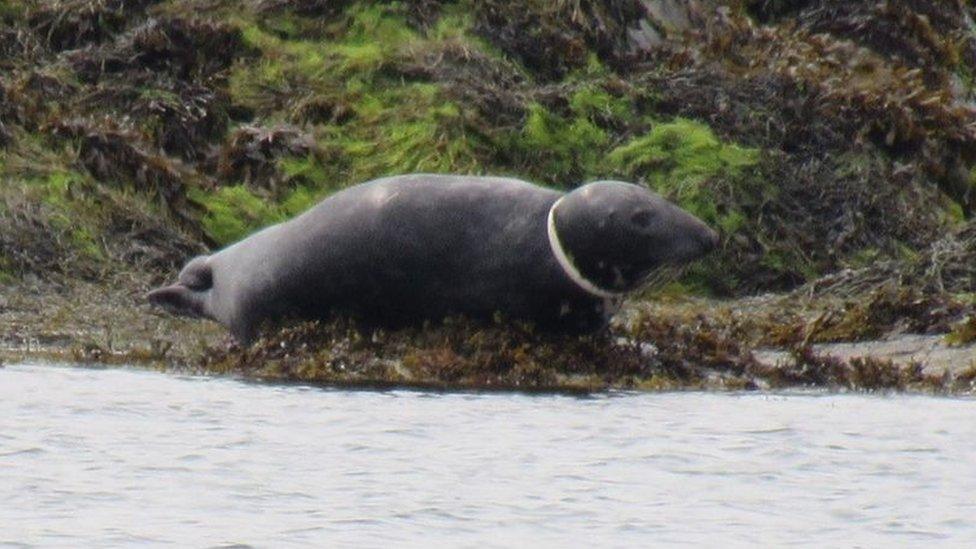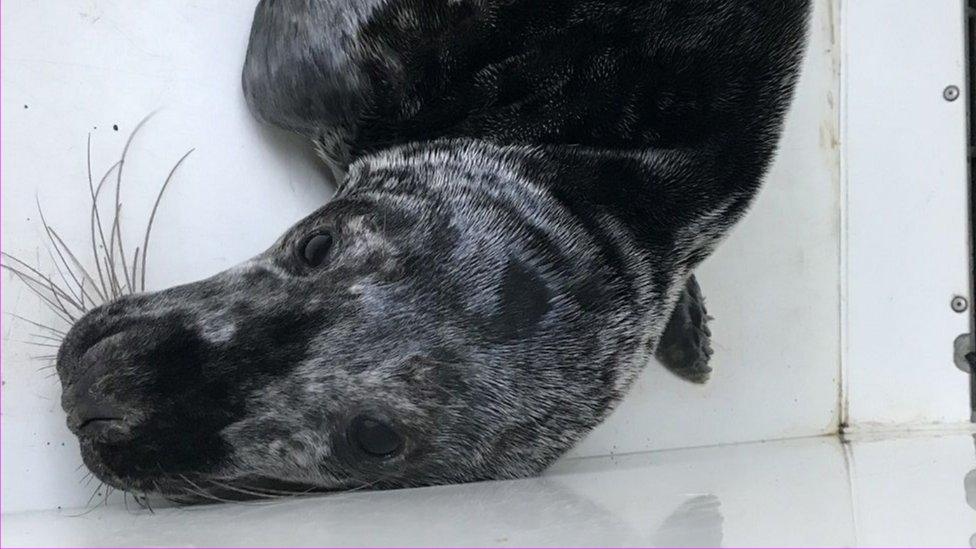Drones warning over breeding seals in Pembrokeshire
- Published
Experts have warned of how drones are disturbing breeding seals
Breeding seals are being disturbed by drones flying near them, experts have warned.
The grey seal population in Pembrokeshire breeds from August to November, but a lack of awareness has led to them being scared into the water with the potential not to return.
Research by Swansea University has so far found drones with four propellers are most likely to cause problems.
It has prompted calls for users to learn about flying them near wildlife.
Paul Renfro, who works with the Pembrokeshire Coastal Forum, said a ban would be difficult to enforce but "acting responsibly" would make a difference.
"Plan ahead, know where the sensitive areas are and keep your distance," he said. "If the seals are starting to notice you, then you're too close.
"Their eyes almost bulge and you can see the stress in their face. When they are starting to look at you then that's close enough."
Pembrokeshire has one of the biggest breeding colonies of grey seals in south west Britain.
While numbers have been struggling in other areas, one of the highest ever annual birth rates was recorded for seals pups last year in west Wales.

Pembrokeshire has one of the biggest breeding colonies of grey seals in this part of the country
Seals stay out of the water during breeding season.
The pups also remain on land until they have moulted their white coats and trebled their birth weight - usually over a period of two to three weeks.
But Mr Renfro said they could be disrupted by drones and, if they get too stressed, "in extreme cases it can move them to other areas".
"If they are scared they can injure themselves [on stones, getting back into the water] and that can cause them to not want to return or not have a successful breeding season," he added.

Tips for drone use
Never land on a beach with seal pups present
Stay at least 50m (164ft) out from the shore
Never paddle between a seal and her pup

A code for drone use has also been issued by the Pembrokeshire Coast National Park Authority.
Anouska Mendzil-Griffiths, one of the researchers who took part in the study, said the impact was immediately clear in the more remote location where they tested the drones.
"We saw that even just our presence was disturbing them," she said. "Some of the seals were shuffling, then flushing into the water.
"They were looking at us up on the cliff top and were clearly agitated.
"They weren't showing much disturbance with a fixed-wing drone because it looks a bit like a bird, but with the multi-copter drones they were very disturbed by that and especially at heights that were quite close to them."
The researchers plan to publish their full results by the end of the year.
- Published11 July 2019

- Published2 January 2019

- Published15 November 2017
